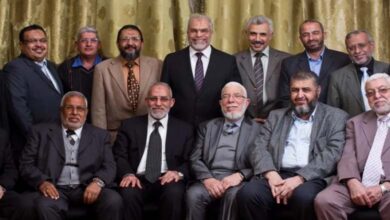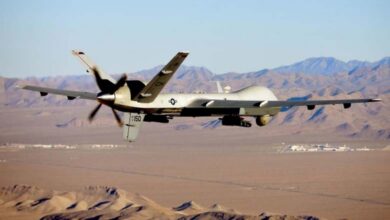The F-14’s journey from Cold War battles to modern missions: a legacy that endured beyond 2006

After the end of the Cold War, the American F-14 Tomcat was expected to see its role come to an end. Yet Washington managed to preserve its relevance.
Designed as an interceptor to confront the Soviet Union and the Warsaw Pact, the aircraft was never used for that purpose. Instead, it was deployed in the early 21st century across the deserts and mountains of the Middle East, evolving into a multirole attack platform and a close air support asset, excelling in missions for which it had never been designed, according to the American outlet National Interest.
The F-14 Tomcat entered production in 1974, with 712 aircraft built across all variants.
It measures 19.1 meters in length, with a wingspan of 19.5 meters when fully extended and 11.6 meters when swept back, and a maximum takeoff weight of 33,720 kilograms.
Early models were powered by two Pratt & Whitney TF30 turbofan engines, while later versions were equipped with two GE F110-GE-400 engines.
Its top speed reaches 2,485 km/h, the equivalent of Mach 2.34. Its range is 3,000 km and its service ceiling is approximately 16,150 meters.
The aircraft carries various missiles such as the AIM-54 Phoenix, AIM-7 Sparrow and AIM-9 Sidewinder, along with JDAMs, guided bombs, the MK-80 series, and occasionally an M61 Vulcan cannon.
Its crew consists of a pilot and a radar intercept officer.
The F-14’s transformation began in the 1990s, following the collapse of the Soviet Union and reductions in the US defense budget. Facing limited resources and expanding mission requirements, the US Navy sought to enhance the versatility of its existing fleet.
While the relatively new F/A-18 Hornet offered a lightweight multirole option, it lacked range, payload capacity and a two-person crew—qualities that made the F-14 highly valuable as a long-range interceptor.
The Navy quickly recognized the latent potential of the F-14, viewing it as a capable strike aircraft requiring only targeted upgrades.
Successive improvements—including digital flight controls, structural reinforcements and the integration of a targeting pod—transformed the F-14 into a platform capable of precision strikes and nighttime operations.
With the addition of JDAMs and laser-guided munitions, combined with remarkable range, flight stability and substantial payload capacity, the Navy successfully built a long-range attack aircraft that, in some ways, surpassed the multirole F/A-18.
After the September 11, 2001 attacks, the upgraded F-14 faced real combat trials. In Afghanistan, it launched from carriers in the northern Arabian Sea and relied on aerial refueling to reach battlefields located hundreds of miles inland.
Its missions included precision strikes, on-demand close air support, forward air control and real-time surveillance using infrared imaging systems.
The two-person crew enhanced workload management during extended and complex missions, with the radar intercept officer handling video feeds, ground coordination and targeting tasks.
The F-14 proved its worth in Afghanistan’s mountainous terrain, where US forces often operated in small groups, under low visibility and with constant demand for air support.
It also served in Iraq, undertaking further precision strike missions, reconnaissance and close air support.
Armed with JDAMs, laser-guided munitions and, at times, glide bombs, the F-14 targeted command centers, radar installations, airfields and armored formations—missions far removed from its original role of intercepting Soviet bombers.
Nonetheless, despite its success in the 21st century, retirement became inevitable. The aircraft was extremely expensive to maintain: its complex variable-geometry wings, aging airframe and 1970s-era systems required extensive maintenance after each flight.
Spare parts became increasingly difficult to obtain, corrosion was a persistent issue, and the Navy sought to consolidate its efforts around a single multirole platform: the F/A-18E/F Super Hornet.
The F-14 Tomcat was officially retired from service in 2006.












